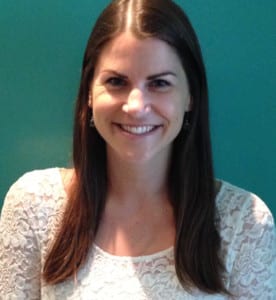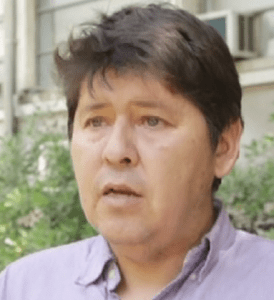Podcasts
ARCHIVES
- CTI Spotlight: Rhonda Herndon and Sonja Haughton (Podcast)
- CTI Spotlight: Lisa Johnson (Podcast)
- CTI Spotlight: Dr. Dennis Culhane (Podcast)
- CTI Spotlight: Jeff Olivet (Podcast)
- CTI Spotlight: Bebe Smith (Podcast)
_________________________________________________________________________
CTI Spotlight: Rhonda Herndon and Sonja Haughton

Rhonda Herndon (left), Sonja Haughton (right).
In this installment of our podcast series, CTI Spotlights, we interview Rhonda Herndon (Practice Manager) and Sonja Haughton (Clinical Team Leader) of the CTI program at The Harris Center for Mental Health and IDD in Houston, Texas. The Harris Center is a collaborator in a county-wide Mental Health Jail Diversion Program that is the result of of a senate bill passed in the Texas Legislature in 2013. It is in this context that Rhonda and Sonja implement the CTI model to work with high-needs individuals exiting the jail system in their county. Listen in to hear more about their experience with applying CTI to this particular population and transition!
_________________________________________________________________________

In this installment of our podcast series, CTI Spotlights, we interview Lisa Johnson. Lisa Johnson is the Breaking Barriers Program Manager at Brilliant Corners in Los Angeles. Breaking Barriers is a 24-month rapid rehousing pilot program that provides housing, case management, and employment services to adults on felony probation who are homeless or at risk of being homeless. Lisa was integral in the development and launch of the program in July of 2015 and has supported her case management team to integrate and adapt the Critical Time Intervention model to meet the unique needs of the Breaking Barriers participants. Lisa has an MSW from Washington University in St. Louis and is passionate about criminal justice reform. Listen in to hear more on how Lisa has worked to integrate CTI into the Breaking Barriers program.
CTI Spotlight: Dr. Dennis Culhane
 In this installment of our podcast series, CTI Spotlights, CACTI Director Dan Herman interviews Dr. Dennis Culhane. Dr. Culhane is the Dana and Andrew Stone Chair in Social Policy and a Professor and at the University of Pennsylvania. He is also the Director of Research for the National Center on Homelessness among Veterans at the US Department of Veterans Affairs and the Co-director for the Actionable Intelligence for Social Policy (AISP). Dr. Culhane’s research focuses on homelessness and housing policy for vulnerable populations needing support. At AISP, Dr. Culhane promotes the development of state and local integrated data systems for policy analysis and systems reform. Dr. Culhane’s contributions to CTI include studies of homelessness, at-risk veterans, and vulnerable youth and young adults transitioning from institutional care. Dr. Culhane believes there’s a cure for homelessness – listen to this podcast to hear how.
In this installment of our podcast series, CTI Spotlights, CACTI Director Dan Herman interviews Dr. Dennis Culhane. Dr. Culhane is the Dana and Andrew Stone Chair in Social Policy and a Professor and at the University of Pennsylvania. He is also the Director of Research for the National Center on Homelessness among Veterans at the US Department of Veterans Affairs and the Co-director for the Actionable Intelligence for Social Policy (AISP). Dr. Culhane’s research focuses on homelessness and housing policy for vulnerable populations needing support. At AISP, Dr. Culhane promotes the development of state and local integrated data systems for policy analysis and systems reform. Dr. Culhane’s contributions to CTI include studies of homelessness, at-risk veterans, and vulnerable youth and young adults transitioning from institutional care. Dr. Culhane believes there’s a cure for homelessness – listen to this podcast to hear how.
CTI Spotlight: Jeff Olivet (Podcast)
 In the second installment of our podcast series, CTI Spotlights, we interview Jeff Olivet. Jeff is an activist, writer, and the President and CEO of the Boston-based Center for Social Innovation, a center that brings together academic research, clinical practice and learning products and quickly moves information out into wide use in the field. His focus is on strategic planning, curriculum development, training and organizational development in the areas of health care and homelessness. Mr. Olivet is a CACTI advisory board member, and has partnered with Center co-directors and the CTI in-person trainers at the Center for Urban Community Services to create an online training and dissemination method for CTI. Jeff also hosts the podcast Changing the Conversation, in which he interviews health and human service experts, teachers, researchers, and advocates on critical and timely topics related to homelessness, trauma, mental illness, and addiction.
In the second installment of our podcast series, CTI Spotlights, we interview Jeff Olivet. Jeff is an activist, writer, and the President and CEO of the Boston-based Center for Social Innovation, a center that brings together academic research, clinical practice and learning products and quickly moves information out into wide use in the field. His focus is on strategic planning, curriculum development, training and organizational development in the areas of health care and homelessness. Mr. Olivet is a CACTI advisory board member, and has partnered with Center co-directors and the CTI in-person trainers at the Center for Urban Community Services to create an online training and dissemination method for CTI. Jeff also hosts the podcast Changing the Conversation, in which he interviews health and human service experts, teachers, researchers, and advocates on critical and timely topics related to homelessness, trauma, mental illness, and addiction.
Click here to listen to CTI Spotlight: Jeff Olivet
CTI Spotlight: Bebe Smith (Podcast)
 In the first installment of our podcast series, CTI Spotlights, we interview Bebe Smith. Bebe is a clinical assistant professor of social work and psychiatry at the University of North Carolina at Chapel Hill. She was the project director for Critical Time Intervention: Local Pilot and Statewide Championing, a project funded by the Kate B. Reynolds Charitable Trust, from July 2012 to June 2015. She is currently working with the NC Division of Mental Health, Developmental Disabilities and Substance Abuse Services to support the expansion of CTI in NC.
In the first installment of our podcast series, CTI Spotlights, we interview Bebe Smith. Bebe is a clinical assistant professor of social work and psychiatry at the University of North Carolina at Chapel Hill. She was the project director for Critical Time Intervention: Local Pilot and Statewide Championing, a project funded by the Kate B. Reynolds Charitable Trust, from July 2012 to June 2015. She is currently working with the NC Division of Mental Health, Developmental Disabilities and Substance Abuse Services to support the expansion of CTI in NC.
Click here to listen to CTI Spotlight: Bebe Smith
SPOTLIGHTS
- CTI Spotlight: Gerald Faundez, Chilean Peer Support Worker
- CTI Spotlight: Proyecto CTI-TS Chile (Photo Essay)
- Spotlight on Andrea White
- Spotlight on the Downtown Women’s Center in Los Angeles
- Spotlight on Paul Howard
_________________________________________________________________________
CTI Spotlight: Gerald Faundez, Chilean Peer Support Worker
 Gerald Faundez was interviewed by Sally Conover and Sara Schilling about his experience as a peer support worker in Santiago, Chile, with Critical Time Intervention – Task Shifting (CTI-TS), an NIMH-funded randomized trial in Brazil, Argentina and Chile. Eric Tapia Escobar contributed to this final summary.
Gerald Faundez was interviewed by Sally Conover and Sara Schilling about his experience as a peer support worker in Santiago, Chile, with Critical Time Intervention – Task Shifting (CTI-TS), an NIMH-funded randomized trial in Brazil, Argentina and Chile. Eric Tapia Escobar contributed to this final summary.
Gerald reports that his recovery journey advanced greatly when he started to be treated in a public community mental health center (CESAM), in the municipality of San Joaquín, south of Santiago center. Gerald says that he has improved thanks to the more efficient and better quality care offered in the CESAM, in comparison to what is available in large hospitals. In fact, the southern zone of Santiago is where community mental health reform began in Chile. This initiative was spearheaded by Dr. Rubén Alvarado, who now leads the CTI-TS study in Santiago and at the time was Director of the Mental Health Program of the South Metropolitan Health Service. Currently, Dr. Alvarado and the CTI-TS team are lobbying so that CTI can become a regular service program in CESAMs and other health centers for individuals with severe mental illness.
My story
I had my first break when I was 18. At first, I was treated in the inpatient and outpatient services of hospitals, and always had to wait a long time for my appointments and to receive my medications. But, I was lucky that the hospital transferred me to CESAM San Joaquín, soon after it opened seven years ago, close to where I live. I have found the quality of the care at the CESAM is much better. Since there are fewer service users, the psychiatrist can spend more time with each person, and the rest of the staff know all of us by name and treat us with compassion.
CTI changed my life!
I remember that in October 2013, María José Jorquera and Sara Schilling – who were later my CTI-TS supervisors – came to speak to me and other users in the CESAM about recovery, hope, and the CTI intervention, which was started in the United States. It was the first time I heard about CTI, and its history with homeless individuals and those with other social problems, and I learned how this type of health intervention truly changed their lives.
María Jose and Sara asked if anyone was interested in working as a peer support worker (PSW) in a CTI program in Santiago. I had a gut feeling that this program could be good for both me and my family. I didn’t know anything about peers, but years earlier I had heard about a group of service users from a primary care center with physical illnesses who got together to offer one another mutual support. That made me think that I would like to help other people with mental illness, by sharing my experiences with them, but I didn’t know how to start.
After years of shutting myself up in my room, I had lost my social skills. I was afraid of being around lots of people. I didn’t know how I would ever make friends or have a girlfriend. When I was younger, I didn’t have any problems interacting with people. I used to like hanging out with my friends. However, once I became sick, my social network got a lot smaller. The opportunity to be a part of CTI, as a peer worker, opened a new door for me.
I really changed my internal “switch” with CTI – it gave me a new way of seeing the world. With the training and supervision, I learned a lot about CTI and how to implement it, and I became more and more confident over time. I even feel that now, I have a better social status for having worked with CTI. I am no longer just a patient, or a “sick person,” but a peer worker, with specific skills. I have a lot to contribute. I learned to use my own experiences with the illness and mental health services to help other users, in their own recovery paths. Now, because of my work on the CTI project, I’m comfortable giving presentations in huge auditoriums, filled with people.
The relationship between users and peers is unusual.
It’s impossible not to get close to the participants when you see them so often. I feel lucky that I formed a good bond with all the participants. This relationship is different than a friendship, because, as a peer, you have to be careful to keep some distance.
(Gerald uses participant X as an example.) At first, X didn’t understand what a peer is, even after I described CTI and my role. During our talks, I focused on listening to him and, at times, shared my own experiences. We would talk about women, beauty, his interests. We had a good connection. One time, when I visited X at his home, I brought some cookies and juice that I purchased with the stipend from the project. X lived in a place so small it was like a “doghouse.” I could see the loss of dignity that X suffered, due to discrimination against him as a person with a mental disorder. I felt close to him and wanted to show him that I cared. The cookies were a way of having a more human interaction with him.
Sometimes it’s difficult for me to see participants when they are midst of a crisis, and not speaking clearly, because I can relate to that. They tend not to grasp the importance of taking medications, and get confused about how many pills they have to take, and when to take them. I always tell them that “the meds help 50% and the other 50% has to do with your family, your surroundings, your perspective.” Many of the families have limited resources and little access to support services. I helped them set up calendars and other memory aids for taking their medications, and I taught them how to use the health center services.
They’re having an existential crisis.
Many of the participants were diagnosed right at the age when they were transitioning from adolescence to adulthood. They ask themselves: ‘What am I doing with my life?’ ‘Where am I going?’ They don’t know where the ball is going (a Chilean expression that means not knowing what your path in life will be). The most important thing is to be supportive during this process.
(Gerald explains his work as a peer with participant Y.) Participant Y had his first episode while he was in college, studying to be an engineer. He wasn’t able to continue with his thesis. The community mental health worker– my CTI-TS partner – and I worked a lot with Y’s family, since Y and his mother were close and spent a lot of time together. But, because of his symptoms, Y sometimes had a hard time expressing himself. During home visits, we worked with Y and his mother and sister to improve communication. I told them about my relationship with my mom and other family members. It was a gradual process, but Y advanced a lot. I also motivated him to participate in social activities, outside his family life. After he started going to tango lessons, his sister confessed that she had never imagined he would ever be able to socialize like that.
You have to begin at home.
I have been changing my family’s view of mental illness. I showed them a video I was in, and they were really impressed by the work I do and are proud of me.
Toward the end of the CTI-TS pilot intervention, I started to travel around Chile with our team, speaking about the intervention in conferences and seminars. I meet with users, family members, and professionals, and I use my story to show them that it’s possible to overcome the stigma associated with mental illness and to live a quality life. I try to encourage others to get training and become peer workers.
This project has helped me realize that people are always presented with opportunities, but the key is that one has to take advantage of them. This – CTI – is my opportunity. It fulfills me, and I feel that I am contributing to my country.
Thank you, CTI, for coming to Chile!
Lea la entrevista completa en español aquí.
_________________________________________________________________________
CTI Spotlight: Proyecto CTI-TS Chile (Photo Essay)

This photo essay consists of excerpts from a video created by the University of Chile team of the RedeAmericas (RA) project. RA is one of the five ‘hubs’ funded by the National Institute of Mental Health (two in Latin America, two in Africa, one in South Asia). The goal of RA is to improve the lives of people with mental disorders in the urban areas of Latin America. The photo essay focuses on Critical Time Intervention-Task Shifting (CTI-TS), a regional randomized pilot study of an intervention for individuals with severe mental disorders. It was adapted over a seven-year period from CTI and is being tested in three cities: Rio de Janeiro, Santiago, and Cordoba. CTI-TS aims to help people during the period of transi¬tion when they first connect (or reconnect) to mental health services. The intervention is described from the point of view of each member of the team and of the people they have helped. Two of the project’s four principal investigators are among those who were interviewed: Ruben Alvarado at the University of Chile and Ezra Susser at the Columbia University Global Mental Health Program.
Click here to view photo essay.
_________________________________________________________________________

Andrea White, M.S., LMSW is the Principal at Housing Innovations, LLC (HI) in New York City. She is also a member of the CACTI Advisory Board. Andrea has 35 years of experience in the design and delivery of services for homeless people with special needs. At HI, she provides training and consultation to agencies throughout the country to expand their capacity to deliver effective services and implement evidence-based practices.
In the mid-1980s, Andrea White was running a women’s homeless shelter in Manhattan. It was a pivotal time for homeless rights – New York City’s “Right to Shelter“ law had just established that all homeless people have the right to emergency shelter. The climate was ripe for reform and innovation, and Andrea joined up with others who were trying to understand the cycle of chronic homelessness and looking to enact change. Andrea participated in conversations with psychiatrists, researchers, and lawyers and other advocates for people with severe psychiatric disabilities who had also experienced homelessness. Their goal was to develop innovative ways to help this population become stabilized in the community as part of their recovery process.
Andrea and other clinicians experimented with accommodating their techniques and adopting a vigorous approach to engaging these “hard to reach” clients. This frequently meant departing from the norms of clinical practice. They adapted their clinical practices by working with populations who were usually turned away from services; learning about the milieu in which clients lived; helping clients acquire resources, social skills, and social supports that were needed in an often unaccommodating community environment; and serving as a bridge to community living rather than as a purveyor of long-term treatment.
Andrea co-authored a fascinating article that describes some of the innovative clinical approaches that were developed at the time.
The CTI model grew out of the discussions and the experiences of clinicians and researchers working at the time in the NYC municipal shelter system. As Andrea puts it: “CTI was built on the idea that having security in a community and a strong foundation is as critical as having a good pair of shoes. CTI centered around some very basic ideas, including encouraging clients to take more control over their lives by imparting knowledge about, and access to, resources within the community.”
Andrea’s contribution to CTI
Over the years, Andrea continued to contribute to the development of the CTI method, passing on feedback from her group training and consultation to various government agencies, including Bucks County, Pennsylvania and the US Veterans Administration (VA), that were using CTI to achieve their goal of ending homelessness within five years.
Her training encourages CTI teams to continuously identify creative ways for increasing client’ self-sufficiency. For example, she suggests that the CTI workers create a folder for each client, filled with documents they need to bring to appointments, including a list of key phone numbers (for their landlord, hospital, doctor, social worker) and other information they might need to solve their own problems. Knowing that they have all the resources they need in one place gives clients a greater sense of control over their lives. Another strategy for empowering clients is to plan for a crisis situation before it happens, so that clients become more involved in resolving their own crisis situations.
Two memorable experiences for her were working with the Downtown Women’s Center in LA, which focuses on trauma-informed care and community organizing, and a training she conducted in Australia for employees working in a single site supported housing unit for people coming in from the streets. With so much experience informing her work, she believes her current partnership with Suzanne Wagner at Housing Innovations (one of the three currently certified CTI training organizations) will enable her to have even more influence over the dissemination and practice of CTI.
_________________________________________________________________________
Spotlight on the Downtown Women’s Center in Los Angeles

Jennifer Ma-Pham is the Director of Housing and Clinical Health Services at Downtown Women’s Center.
In 2011, the Downtown Women’s Center (DWC) in Los Angeles began a landmark pilot study of CTI to support 80 women with a history of chronic homelessness who were moving to permanent supportive housing. Funded by a grant from the Conrad N. Hilton Foundation and Fannie Mae, this was the first large-scale implementation of its type in the city’s infamous Skid Row, a .4 square mile area that is home to approximately 3,500 homeless individuals on any given night.
Nearly a third of the study participants were younger than 17 at the time of their first homeless episode and more than half had been incarcerated. Many had a history of substance abuse and mental and physical health issues. Jennifer Ma-Pham, the Director of Housing and Clinical Health Services at DWC, found the CTI model fit well for this population. “The best about thing about CTI, and I can speak for my entire team and I, is that it really helped case managers focus on the critical things that keep people housed initially,” Jennifer states, “And that is mainly because the clients that we serve are chronically homeless, and have been for a very, very long time. They also typically have co-occurring disorders. It is so important to keep that focus for those nine months, so that other issues can be addressed long term.”
A June 2014 report available online compares the lives of the women in the study at intake before they received CTI with their lives at three time points during the intervention and at the one-year follow-up (three months post-CTI). All 80 clients successfully completed the CTI program and 100% were stably housed at the end of the evaluation period. The findings were impressive: At intake, 60% of clients required assistance with living skills “most of the time,” and one year later 53% required only “occasional” assistance. The clients perceived that they had achieved greater independence by the end of the intervention: 89% reported improved ability to deal with their own needs. Only 8% of clients reported being employed at the time of intake, and six months into CTI 21% reported having some form of paid employment. CTI also increased clients’ connections to their families and community, with 80% reporting a feeling of belonging to their community and 94% knowing where to get help when they needed it.
The report also includes important feedback from clients that highlights the importance of the CTI case managers’ individualized approach. During focus groups, women often mentioned that their case manager treated them like a “friend,” “showed they cared,” and “were always there” when they needed them. For them, CTI wasn’t simply about becoming connected to resources; also very important was the process through which these connections were made. One client said that CTI case managers offer “support with respect and dignity,” which is essential during a period of transition. Jennifer confirmed this, stating that “the way we implemented CTI was really about building that trust in the relationship early on. So being able to really engage, sometimes multiple times a day initially, was a great opportunity to build that relationship.” This supportive relationship assisted CTI case managers in successfully advocating for clients and linking them to appropriate social services. Some clients reported that initially, having CTI case managers make appointments for them and take them to appointments was very helpful. Once they felt more comfortable in taking these steps themselves, they did not need as much hands-on support and were capable of handling these tasks on their own in the later stages of CTI.
The implementation was not without challenges, however. Insufficient staff time and resources posed a problem for administrative tasks and case reviews. In addition, during periods when clients were facing multiple crises, weekly meetings were often not enough, and more had to be scheduled. DWC staff also felt that they needed to develop stronger connections to services outside DWC, such as those that are part of the larger public benefits and law enforcement systems.
Many valuable lessons have emerged from the project. Jennifer and her colleagues believe that much of their success is due to the fact that they worked to create clear roles for property managers and case managers. Their efforts included educating property management personnel about the CTI approach and letting them know that, if a problem arose with a client, they could communicate with the CTI case manager to collaborate on a positive resolution. The report also recommends that organizations considering implementing the CTI model first carefully assess their resources and referral networks.
DWC continues to expand its CTI program in new and exciting ways. “We are now providing CTI to residents that are moving out of our supportive housing into the community with lower levels of support.” Jennifer noted, “and we’re also providing CTI to our veteran women who are working through our HUD-VASH Program. Also, since the CTI team now is really focused on our VA program, we’ve trained the rest of our case management staff to provide CTI for new move-ins, so that they don’t go to a separate team and they stay with the housing team that has been trained in CTI.”
Jennifer and her colleagues have even more exciting ideas in mind for the future of CTI at DWC, “We’re looking into training our health team who work with women who use the hospital frequently.” Also, because they have a department that focuses on vocational education and runs social enterprises, they are considering how CTI could be used with women who are transitioning back into the work force. As DWC continues to lead the way in CTI innovation, we can be sure this won’t be the last time its work is spotlighted and celebrated!
_________________________________________________________________________
 Paul Howard is the Senior Director of Knowledge Sharing, Community Solutions. During his tenure as Associate Director of Training and Consulting at the Center for Urban Community Services (CUCS), he contributed to the evolution of approaches for utilizing CTI in the field. He developed standards for the in-person CTI training and consultation. He also created some of the tools that are essential for improving program fidelity to the model as it continues to be widely disseminated. He is a member of the CACTI advisory board.
Paul Howard is the Senior Director of Knowledge Sharing, Community Solutions. During his tenure as Associate Director of Training and Consulting at the Center for Urban Community Services (CUCS), he contributed to the evolution of approaches for utilizing CTI in the field. He developed standards for the in-person CTI training and consultation. He also created some of the tools that are essential for improving program fidelity to the model as it continues to be widely disseminated. He is a member of the CACTI advisory board.
Mr. Howard was kind enough to sit down with Nicky Wood, a student intern at CACTI, and share his experiences. Below are the highlights from that interview.
I have been involved with CTI since 2007, when the Center for Urban Community Services (CUCS) received a grant from the Mizuho Foundation to develop a training to help with the dissemination of CTI. We worked with Dan Herman and Sally Conover to develop that program. Then, we trained three New York City organizations on CTI. What we quickly noticed was that, unlike some other evidence based practices like Motivational Interviewing, CTI is a program intervention. Not only does staff have to gain new skills, but the agency has to put in place an infrastructure that makes CTI possible.
We have also learned that follow-up consultation is the key. We didn’t see good results when we just offered stand-alone training. Training is certainly necessary, but it’s not sufficient on its own. We like to do some planning before in order to customize the training, and then we do follow-up consultation, usually for 6 months to a year, to make sure that CTI as a program is embedded.
A recent randomized trial comparing web-based CTI training by trainers at the Center for Social Innovation with in-person training by our trainers at CUCS showed that online training can be very effective. In the study, only the in-person training by CUCS provided follow-up consultation, and 100% of our teams were able to implement. In the same study, no consultation was provided by the online trainers, and only 78% of those teams went on to implement CTI. It’s not because of the training difference, but it’s just that people need follow-up consultation. Online is a great option, but it needs to be coupled with consultation. I think there will always be a demand for in-person training.
How we know if a program is ready to implement CTI
When I get a call from someone interested in CTI, I first find out if CTI is a good fit for them. The two most important things I ask them are: “Are you able to travel in the community or can you only work from the office?” and “Do you want to do a time-limited intervention?” If you can’t, or don’t want to, be time-limited or travel in the community, you can’t do CTI. We also look at whether they are only interested in CTI because they need some evidence-based practice. I ask them if management is really willing to support the CTI team and do long-range planning to sustain it after we do the training.
CTI calls for a person-centered approach and harm reduction. Requiring abstinence from certain addictive behaviors can present a barrier to them receiving any services. Instead, you need to meet the client where they are at and to talk to them about things that get in the way of their life. If they spend all their money on drugs instead of paying the rent, talk with them about how to make sure they pay the rent first. It’s about reducing harm. If we find that an agency doesn’t subscribe to a harm reduction approach, we say we don’t believe CTI for them.
Challenges to implementing CTI
The challenges are different for each program. I’ve helped over a hundred programs implement CTI so I’ve probably seen most of them. There will always be challenges. A common issue at the program level is staff saying we can’t do this in 9 months because our clients’ problems are so severe, we could never work through all of them in 9 months. So I have to change their mindset. The goal of CTI is not to solve clients’ problems; the goal is to set them up with longer formal and informal supports needed to address those issues. Case managers are used to trying to solve problems, whereas CTI is more about making linkages and making sure the linkages are a good fit.
Another issue that a lot of people have at the program level is that CTI calls for a decreased amount of work throughout the three phases of CTI. Since the traditional case management model doesn’t have phases, it’s hard for staff to scale back when their clients are still having problems. We try to prepare the team for what will occur. If they start setting up the linkages from the beginning, it’s much easier for them to scale back the work.
Maintaining fidelity to the model while also adapting CTI to needs of the agency
Before doing any training, I do a key informant interview. It is an hour and a half call at a minimum. I go over the 14 core components or principles of CTI. I ask if they can meet each standard, or do something slightly different or not do it at all. Some things can be customized, for instance, we help them make their forms as CTI-like as possible.
Example of a successful implementation of CTI
We did a program with a department of mental health where they did everything right. They involved all the stakeholders in the planning. Instead of telling them, “Okay, you’re going to do CTI and here’s how you’re going to do it.” Another thing they did was to take the time to plan it out with us. Altogether, we spent 4 months planning before implementing the training. We then trained the staff, and did two tracks of follow-up consultation: one with the CTI team going over program and clinical issues and one with administrators where we worked through systems-level barriers. That was incredibly successful. Once CTI was embedded in the program, we offered a train-the-trainer model so that they had staff who could train future staff. They worked sustainability into it. They were also concerned about fidelity, so they did a fidelity assessment and got good results. Now they have way for checking on fidelity every six months. This is an example of the perfect way to do it. But, not everyone has the funding to be able do all of that. The extent to which you can fit in some planning, training, consultation and some work on sustainability, then that will make for a successful program.
_________________________________________________________________________
Would you like us to profile your CTI program or your personal experience with CTI? Please contact us here.
